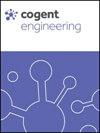研究焊接参数对 316 不锈钢管残余应力和硬度的影响:实验和分析研究
IF 2.5
Q2 ENGINEERING, MULTIDISCIPLINARY
引用次数: 0
摘要
摘要 在使用过程中,由于机械载荷、热载荷或焊接变化引起的塑性变形,会产生残余应力。尽管对焊接工艺进行了广泛研究,但在了解不同焊接参数对焊接 316 不锈钢管残余应力和硬度的综合影响方面仍存在很大差距。本研究针对这一差距,系统地研究了焊接电流(90、100、110、120、140 和 160A)、金属丝类型(6010、6013 和 7018)和金属丝直径(3.2 和 2.25 毫米)等参数,全面分析了它们对机械性能的影响。作为实验工作的一部分,进行了电弧焊接、硬度测试和 X 射线衍射测试。根据基于 X 射线衍射分析的理论计算,在不同的焊接条件下,残余应力会随着硬度的降低而增加。据观察,随着残余应力的增加,硬度水平也会降低,这为深入了解这些因素之间的关系提供了宝贵的资料。这项系统调查扩展了现有知识。本文章由计算机程序翻译,如有差异,请以英文原文为准。
Study of welding parameters’ effects on residual stress and hardness in 316 stainless steel pipes: Experimental and analytical investigations
Abstract During service, residual stresses are generated as a result of plastic deformation induced by mechanical loads, thermal loads, or variations in the applied welding. Despite extensive research on welding processes, there remains a significant gap in understanding the combined effects of different welding parameters on the residual stresses and hardness of welded 316 stainless steel pipes. This study addresses this gap by systematically examining parameters of welding currents (90, 100, 110, 120, 140, and 160A), metal wire types (6010, 6013, and 7018), and wire diameters (3.2 and 2.25 mm), to provide a comprehensive analysis of their impact on mechanical properties. As part of the experimental work, arc welding, hardness tests, and X-ray diffraction tests were conducted. In different welding conditions, residual stresses increase as the hardness decreases, according to theoretical calculations based on X-ray diffraction analysis. It is observed that as residual stresses increase, hardness levels decrease, providing valuable insight into the relationship between these factors. In this systematic investigation, existing knowledge is extended.
求助全文
通过发布文献求助,成功后即可免费获取论文全文。
去求助
来源期刊

Cogent Engineering
ENGINEERING, MULTIDISCIPLINARY-
CiteScore
4.00
自引率
5.30%
发文量
213
审稿时长
13 weeks
期刊介绍:
One of the largest, multidisciplinary open access engineering journals of peer-reviewed research, Cogent Engineering, part of the Taylor & Francis Group, covers all areas of engineering and technology, from chemical engineering to computer science, and mechanical to materials engineering. Cogent Engineering encourages interdisciplinary research and also accepts negative results, software article, replication studies and reviews.
 求助内容:
求助内容: 应助结果提醒方式:
应助结果提醒方式:


